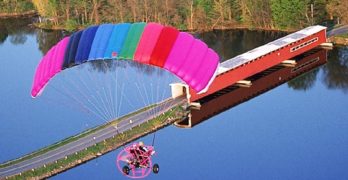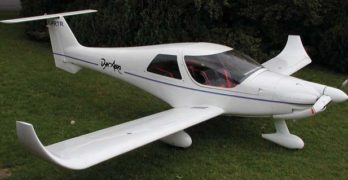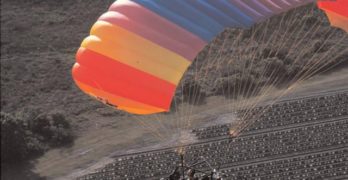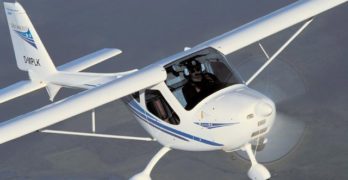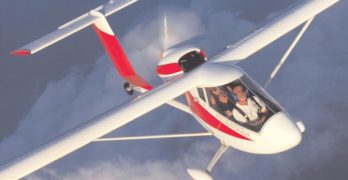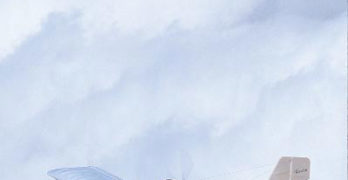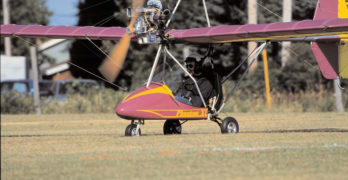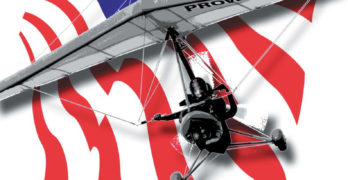Events of last fall changed many things, among them the FAA’s action to push through the proposed sport pilot rule with its definition of a new class of aircraft.
Work on the proposed rule has slowed as the FAA focuses on efforts to ensure the air transport system is intact for millions of airline travelers. New rules for aircraft flown primarily for fun were necessarily put on the back burner.
As we’ve noted in these pages before, the proposed rule offers significant promise to light aviation, and many experts are sure that the sport pilot NPRM (notice of proposed rulemaking) will still be released for public comment, followed at some point by a new rule. Certainly it represents a breath of fresh air, and that may be just what a beleaguered FAA needs come springtime.
Possibilities
I’ve had the pleasure of flying a great many of the light aircraft introduced over the last 25 years.
Search Results for : flight design ct
Not finding exactly what you expected? Try our advanced search option.
Select a manufacturer to go straight to all our content about that manufacturer.
Select an aircraft model to go straight to all our content about that model.
Powered parachutes are on the rise
For years, I’ve said that we misnamed the class of aircraft we call ultralights. We should call them ultraslows, because that’s what they do well-fly slowly.
Powered parachutes prove this point perfectly. One look at the 22 brands sold in the U.S. will tell you that they are robustly built-some weigh more than 400 pounds empty! Weight discussions virtually ignore the wing, but it’s the wing and its rigging to the carriage that dictate a parachute’s speed.
Powered parachutes are excellent at flying slowly. They take off, cruise, and land at about the same speed: 26 mph on average.
A Misunderstood Machine
When I first tried a powered parachute, I didn’t get it. Why would any one want to fly something so slow and unmaneuverable?
I prefer flying at slower speeds, so I wasn’t questioning the slow cruise speed. I objected to the one-speed-fits-all approach, equating this to a lack of ability to maneuver out of situations.
Dyn Aero adds a Four-Seater
Thanks to coverage in KITPLANES®, you are surely aware of an aircraft called the MCR 01, or maybe you know it as the Banbi, or perhaps you know the American supplier’s name, Lafayette. Despite the multiple names, the aircraft from a French kit designer have no doubt about their purpose. These sleek, small, composite machines are high-performance aircraft that win contests and customers.
The MCR 01 (Banbi) is a two-seat, carbon-fiber airplane with dashing lines and blazing speed, and the new MCR 4S is an amazingly light four-seater based on the Banbi design.
You probably know the MCR 01, but it’s less likely that you know its creator, Dyn’Aero, and its young, ambitious founder.
Long Aviation Heritage
Dyn’Aero is based in eastern France near the town of Dijon, which many Americans know because of its famous mustard. The region is also rich in vineyards with the famous Loire Valley on its southern extremity.
Gemini Twin
A New Powered Parachute From a Well-Known Leader
Randy Snead branches out into his own company
Once an important figure in
Buckeye Industries, Randy is
known to many as the man
who worked on the technical
side and performed flight-testing for
Buckeye. When the former company fell
into struggle (see Editor’s Note), Randy
departed to do his own thing. Customers
who followed state, “It’s the people
behind the company” that are important.
I can find no argument with this
approach; we all tend to trust those we
know.
In turn, Randy is assisted by people he
trusts. His wife, Fern, is the business
manager and also operates the parts and
ordering department for the young firm.
Their son, Jeremiah, has experience in
general aviation aircraft, weight-shift
trikes, and powered parachutes, and he’s
built many powered parachutes. In the
EAA way, Gemini Powered Parachutes is
a family affair.
Introducing Gemini
Powered Parachutes
“It’s the American way” say others.
Germany’s Award-Winning Remos G-3 Mirage
“White, composite, and from overseas”…was a theme
of EAA AirVenture Oshkosh 2002 in the ultralight/lightplane
area. I’ve already congratulated Experimenter
Editor Mary Jones and Art Director Pierre Kotze on the
October issue’s beautiful layout of the aircraft from
afar, which may become near and dear to Yankee pilots.
This month,
I’d like to introduce
you
to one of the
new flock of white, composite,
and overseas aircraft—Remos Aircraft’s
G-3 Mirage.
For the second EAA AirVenture
Oshkosh in a row, I was delighted to
fly with Allistair Wilson, an Irishman
now residing in the United States.
Like last year, he is working with Rob
Rollison and the Rollison Light Sport
Aircraft Inc., based in Bloomfield, Indiana.
Last year, Allistair and I flew
in the Flight Designs CT. This year it
was the Remos G-3. Both are white,
composite, and from overseas. The
trend is real!
The Factory and People
In addition to flying with Allistair
at AirVenture, I also chanced to meet
the G-3 Mirage designer, Lorenz Kreitmayr,
at a French ultralight show
called Blois (the town it’s near).
The Vista A-20 Cruiser & Varlet
Eastern European designers deliver nimble machines
UPDATE–November 2008: According to FPNA, an American company with a business relationship to A-20 producer Aeroprakt, the A-20 has been discontinued. Please contact FPNA for more information (contact info at end of article).
As the new millennium got underway,
visitors to EAA
AirVenture Oshkosh 2000 examined
a new aircraft from a
Ukrainian company called Aeroprakt
Ltd. Named the A-22 Valor, the unique
side-by-side two-seat aircraft had a distinctive
cabin largely covered in clear
plastic. It was displayed by John Hunter
and his company, Spectrum Aircraft.
The Valor has turned out to be only
the first in a fleet of light aircraft that
have materialized before American eyes.
In 2001, another Aeroprakt model appeared
on Spectrum’s display space-the
A-20 Vista Cruiser, one of a series of A-20
models.
John Hunter became well
known in the light plane
world while working
for Phil Lockwood,
designer of the much-admired Air Cam.
Rans S-12S Super Airaile
A brave new world of “sport pilot” approaches. Like all things new, it has plenty of allure and some uncertainty attached to it. Its promise is great, but no one, including FAA, can predict how it will turn out. In such times familiar and reliable aircraft become as comfortable as a well-worn helmet. Such standard bearers may not seem as exciting as a new machine, but you can count on them to behave with good manners. In aviation, no proof is better than years of field experience in the hands of many owners.
Into this hazy future flies one aircraft
that qualifies as a known
quantity. The RANS Inc. Airaile
S-12 and S-14 models have established
themselves as some of
ultralight aviation’s most popular aircraft.
RANS reports close to 1,000
Airailes sold (800-plus S-12s, more
than 100 S-14s, and about a dozen S-
12S models). This blows away every
RANS model line except the ubiquitous
S-6 Coyote series; however, even
the S-6 counts only a couple hundred
more deliveries.
Phamous Phantom
Phantom ultralights continue to charm many pilots
The proposed sport pilot and light-sport aircraft rule changes have been
the focus of much discussion and anticipation over the last several
months, and good reasons for such unbridled attention are plentiful.
Under the proposed rule, you can obtain
an FAA sport pilot certificate in as
little as 20 hours and then carry a passenger
without having to become a flight
instructor. Many interesting aircraft will
become available for purchase either as
kits or ready-to-fly light-sport aircraft
(LSA), and these machines will be more “capable” in that they will be faster, better
equipped, more comfortable, and
more closely resemble conventional aircraft.
In many ways, they will outperform
the general aviation aircraft they may
come to replace.
Experts expect financing and insurance
to become more readily available.
And access to America’s 12,000 airports
should follow. You’ll be able to buy fully
built LSA that will qualify for commercial
operations like flight training or rental.
American Trikes – Sidebar 1
Contacts!
Here’s a directory of contact information for
the various companies mentioned in this
article.
• Airsports USA (New York):
phone 718/777-7000
e-mail fly4fun@flyforfun.net
• Antares Ltd. (Alaska):
phone 907/688-7001
e-mail asainc@customcpu.com
• Butterfly Wings by GibboGear (Florida):
phone 863/679-6383
e-mail gibbogear1@aol.com
• Concept Aviation (Tennessee):
phone 865/693-1284.
e-mail aaldon@aol.com
• J&J Ultralights (Florida):
phone 386/330-2007
e-mail jjultralight@aol.com
• Kemmeries Aviation (Arizona):
phone 623/566-8026
e-mail fly@kemmeriesaviation.com
• Lookout Mountain Flight Park (Georgia):
phone 706/398-3541
e-mail fly@hanglide.com
• North Wing Design (Washington):
phone 509/886-4605
e-mail trikes@northwing.com
• Personal Flight (Washington):
phone 509/682-6262
e-mail fly@personalflight.com
• Sabre Aircraft (Arizona):
phone 623/393-0234
e-mail sales@sabretrikes.com
• Skyboat/Paratrike (Texas):
phone 281/852-2228
e-mail ultmark2@phoenix.net
• Soaring Eagle (Texas):
contact was unsuccessful at press time
• TC’s Trikes (Tennessee):
phone 423/802-1193
e-mail tctrikes@mindspring.com
• Top Dog Ultralights (Colorado):
phone 970/749-4838
e-mail topdog@fone.net
• WeTTrike Inc. (Mississippi):
phone 601/947-9281
e-mail sales@wettrikeinc.com
Published in Experimenter Magazine
American Trikes
Made in the USA and Yankee friendly!
Many pilots and even some experts believe trikes are a European innovation. Indeed, producers across the Atlantic took the breed to new heights, yet the fact remains that the earliest commercial producers of weight-shift trikes were here in the United States. In the early 1980s trikes were primarily an American phenomenon.
In the early days, before ultralights
had been defined, hang gliders
added power and slowly evolved to
use wheeled carriages. The first
producers included brands that
transitioned from the hang gliding
world, such as Soarmaster, Bennett
Delta Wings, and Flight Designs (no
relation to the German producer of
the CT). All of these American names,
and a good many more, are now
gone.
Today, when you hear the word
trikes, you may think of Air Creation,
Cosmos, Pegasus, AirBorne, or other
companies from Great Britain,
Europe, or Australia. Most of the
development work in trikes has
seemed to come from imported
brands.
- « Previous Page
- 1
- …
- 134
- 135
- 136
- 137
- 138
- …
- 145
- Next Page »



